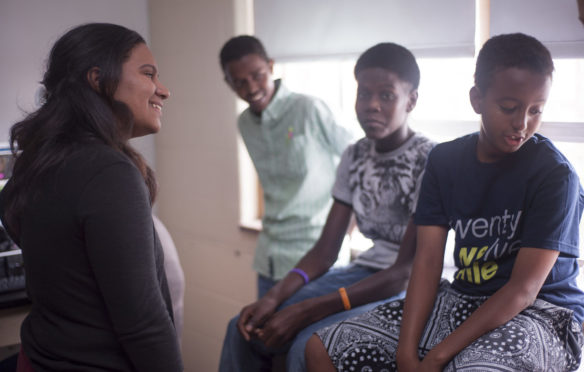
Commissioner Jason E. Glass
November is National Homeless Youth Awareness Month, a time for us to bring attention to the prevalence of homeless youth within Kentucky and create an awareness of the challenges faced by students and families experiencing homelessness.
Each year, more than 24,000 students across our Commonwealth experience some form of homelessness or housing instability. These students can be living in motels, staying on a friend’s couch, living in a car or in a shelter, as well as being what is traditionally thought of as homeless. Three-quarters of our homeless students are living with another family, or what we call doubled-up.
Along with losing their home, community, friends and routines – as well as their sense of stability and safety – many homeless children and youth are also victims of trauma. Traumatic experiences, mental health issues and a lack of access to learning opportunities have profound effects on homeless families and greatly impact a student’s ability to learn and succeed academically.
Students experiencing some form of homelessness are more likely to be chronically absent and have layers of adversity and trauma that affect their ability to learn and succeed academically and socially. Research shows the connection between chronic absenteeism and poor performance in school.
For the country’s youngest students, homelessness or housing instability can impede their ability to learn critical early skills. The U.S. Department of Education (USED) reports, “Children who are chronically absent in preschool, kindergarten, and first grade are much less likely to read at grade level by the third grade. Students who cannot read at grade level by the end of third grade are four times more likely than proficient readers to drop out of high school.”
In Kentucky, students experiencing homelessness dropout at a rate almost four times higher than their non-homeless peers. These students also are often doubly at risk, with almost 5,000 of the 24,000 children identified as being homeless in the 2017-2018 school year also identified as having a disability. Almost 1,500 of those homeless students were identified as having limited English proficiency.
And in these days of COVID-19, our homeless students face additional challenges of not being able to access the internet for virtual learning or being able to pick up paper packets. While it is easy for homeless youth to fall off a school’s radar when they are not attending in-person classes, our districts are taking steps to make sure that doesn’t happen.

Giselle Danger-Mercaderes is the Homeless Education coordinator for Jefferson County Public Schools (JCPS). More than 5,100 students face housing insecurity each year in the district.
Photo submitted by JCPS. (Editor’s Note: This photo was taken before the COVID-19 pandemic.)
The federal McKinney-Vento Homeless Assistance Act was passed in the late 1980s and is the only major federal legislation that addresses homelessness. It provides funding for a range of services, but in order to qualify, families or a student must be identified.
The mission of the Kentucky Education of Homeless Children and Youth Program – housed at the Kentucky Department of Education – is to have every student experiencing homelessness quickly identified, engaged in a hope-filled learning environment and receiving the services he or she needs.
We have a homeless education coordinator in every district whose mission is to maintain relationships and partnerships with students, families, district personnel, business leaders, community organizations and industries so that every student experiencing homelessness can achieve success and thrive in school and life.
Homeless education liaisons work tirelessly to ensure these families feel like they are a part of the school learning community and that students experiencing housing instability successfully graduate, are ready to advocate for their unique needs, and are prepared for postsecondary education and careers.
Many districts have built upon existing infrastructure to create a better safety net that includes all district staff being responsible for making direct contact with specific students and their families. These types of mentoring programs help districts ensure they are not overlooking or missing any student.
Although waivers that have prevented evictions due to COVID-19 have kept the numbers of homeless youth from increasing dramatically at the start of the year, we can expect to see a significant increase in those numbers as the waivers expire and the economic impacts of the virus continue to take a toll on Kentucky’s families.
We must be prepared to find more ways to ensure that these students – some of the Commonwealth’s most vulnerable – do not fall through the cracks.
During November, a time when we traditionally think of families and home, know that we are working to serve our students who may be struggling with the most basic of necessities – a stable place to lay their heads.
And for those of you who work with Kentucky’s most at-risk students, thank you for everything you do.
See a video from Dr. Jason E. Glass about National Homeless Youth Awareness Month on YouTube.



[…] Reaching and serving Kentucky’s homeless children and youth […]